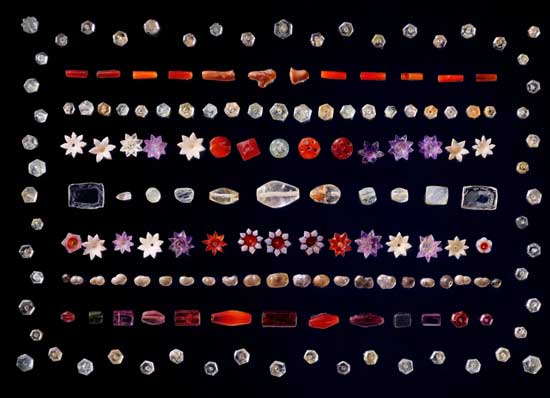Finding custodians for the Piprahwa Relics
On May 7, Sotheby’s Hong Kong was set to auction “gem relics” of the Buddha, with a starting bid of HK$100m (£9.7m). That sale has now been postponed. Amidst a rising tide of objections to the sale, from Buddhist and academic quarters worldwide, the Indian government issued a legal notice to Sotheby’s Hong Kong and the sellers demanding the repatriation of the relics to India, along with a public apology for offending religious sentiments.
This is a crucial first step to ensuring that the relics are cared for in a way that is attentive to Buddhist understandings of sacred things, and to the complex histories in which the relics have played an active role. It brings into focus global debates about colonial legacies and the art market, as well as cultural identity, exchange and heritage. What might happen now?

At the centre of the controversy: The "gem relics"
The consignors of the sale are Chris Peppé and two cousins, who inherited the relics from their great-grandfather, the British colonial landowner W. C. Peppé. In 1898, Peppé dug them out of a stupa on his estate in Piprahwa, present-day Uttar Pradesh, India. He sorted the relics into bone fragments and ash on the one hand, and what he considered gems and precious metals on the other. The British colonial government claimed the finds under the 1878 Indian Treasure Trove Act. They gave the bone and ash to King Chulalongkorn of Siam (Thailand), and the gems to the Indian Museum in Calcutta (Kolkata). Peppé was permitted to keep a fifth of the gems. It is this portion of the Piprahwa relics that the Peppé family had consigned to Sotheby’s Hong Kong.
As we wrote in an op-ed and longer essay, this continued separation of “gems” from “bones and ash” in the Sotheby’s sale perpetuates colonial violence. The members of the Shakya clan—the clan into which the Buddha was born—mixed both together when they deposited them in the stupa at Piprahwa more than two thousand years ago. An inscription on one of the reliquaries containing the relics inside the stupa designated the contents as sharira, the corporeal remains of the Buddha, imbued with his living presence.
Were the gems themselves seen as parts of the Buddha’s body transformed by the cremation pyre, offerings made by his descendants, or stand-ins for the donor’s own bodies? We can’t be certain of any single categorical distinction operating at the time, and contemporary Buddhist perspectives can vary in this respect. But we can affirm that they were meant to remain together in perpetuity. From any perspective, Buddhist or not, the “gems,” like the bones and ash, are grave goods.
Buddhist leaders today, in statements issued in response to the sale, are united in identifying the commodification of the “gem relics” as a profound ethical violation. Venerable Dr Yon Seng Yeath, Abbot of Wat Unnalom and Rector of Preah Sihanouk Raja Buddhist University, Phnom Penh, has written that ‘‘Selling Buddha’s relics isn’t just a legal or commercial issue—it’s a moral failure. It disrespects a global spiritual tradition and ignores the growing consensus that sacred heritage should belong to the communities that value it most…For Buddhists, relics are not historical curiosities but living connections to the Buddha.”
The British MahaBodhi Society wrote that “the separation of the Buddha’s bodily relics from the gems, which were devotionally offered as an act of puja, is an unwarranted misjudgment resulting from ignorance and exploitation.”
For Dr Khamvone Boulyaphonh, Director of the Buddhist Archives in Luang Prabang, Lao PDR, “those who are in possession of relics are considered people with merit. But if they see them only as a kind of commodity that they can sell to make a profit, that is considered an action which greatly injures the feelings and hearts of people, particularly Buddhists.”

May 6 protest against the sale at the Wat Saket, Bangkok, organised by Dr Pipad Krajaejun
The Supreme Patriarch of the Dhammayut Order of Cambodia, Venerable Bour Kry, along with Venerable Pin Sem, Abbot of Wat Reach Bo Monastery, Siem Reap, have acknowledged they cannot pass judgment on legal matters and emphasise restraint in imposing Buddhist views on non-Buddhist people, while nonetheless highlighting the starkly unethical nature of the sale. Venerable Kheum San, Chief Monk of Phnom Penh, has joined his voice to theirs in compassionate condemnation of the ethical transgression.
Dr Pipad Krajaejun, Assistant Professor in History at Thammasat University, Bangkok, organised a protest against the sale on May 6 at Bangkok’s Wat Saket which now holds a portion of the Piprahwa relics gifted to Thai King Chulalongkorn. Explaining his motivations to us, he wrote that the relics are “regarded as sacred, transcending their classification as mere valuable objects or heirlooms of the Peppé family, and therefore warrant special protection rather than sale.”
The lead-up to the Sotheby’s sale date, and now its postponement, has provoked a remarkable eruption of Buddhist voices into global debates on ethical practice across contemporary Arts sectors. While Sotheby’s has banked on the sacred value and historical context of the relics to drive up their monetary value in their marketing strategies, those same characteristics manifestly challenge their very commodification.
If the pause in the Sotheby’s sale holds the promise that the Piprahwa relics will escape the auction hammer, the space afforded by this moment of reprieve begs further reflection on how they might escape reduction to the status of private property itself.
Chris Peppé’s essay for the Sotheby’s catalogue was titled “a four generation story of custodianship.” The Indian government has questioned this: “custodianship would include not just safe upkeep but also an unflinching sentiment of veneration towards these relics”. This is also a legal statement—because it was the Government of India (then ruled by the British) which granted the custodianship over the relics to W. C. Peppé, it is India, they write, which has the “right of first refusal” as Peppé’s descendants have shown themselves keen to relinquish that role.
Heritage practitioners have recognised that traditional systems of custodianship balance the material preservation of cultural objects with the transmission of intangible practices of care. In monasteries in Thailand, Cambodia, and Lao PDR, Buddhists ritually ask permission of sacred images to invite them to inhabit another building, or to clean and conserve them. In Luang Prabang, the Phra Bang Buddha statue is brought out during the Lao New Year celebrations for all devotees, regardless of rank or status, to lustrate with water as a blessing.
The British MahaBodhi Society, in a May 6 letter to Sotheby’s, cited the responsibilities the Maha Bodhi Society of India has taken on as a custodian of relics of the Buddha. Custodianship, they note, requires expertise in “enshrining the Buddha’s relics, so that they may be venerated for generations to come…with offerings and rituals performed in accordance with centuries-old traditions”—traditions which can be traced to those performed by the Shakya clan at the Piprahwa stupa. Just last week, they escorted relics found in Sarnath to Vietnam for the UN Vesak Day celebrations.
The many related Maha Bodhi institutions founded by Sri Lankan Buddhist revivalist Anagarika Dharmapala around the turn of the 20th century attests to the structural plurality of Buddhist traditions. If there is no Buddhist Vatican and no Pope, there is vibrant diversity of intellectual and devotional practice over space and time, together sustained with foundational reference to the Buddha whose relics are recorded as having been interred by his descendants at Piprahwa. The Piprahwa relics might be said to belong properly to the Buddha only; but they are made to participate in the making of Buddhist communities and as such they belong to those same communities.
In much theorisation of gift-giving, including that developed by Buddhists over more than two millennia, it is the giver who gains more than the receiver. The merit gained by the giver of a gift brings about wellbeing in this life and the next. One speaks, then, of the opportunity to give a gift, and to thereby gain merit. With the postponement of this sale, and the attention of the global Buddhist community on the relics now, the Peppé family has been presented with a golden opportunity to consult with Buddhist constituencies and the government of India to find appropriate custodians for the Piprahwa relics.
(Professor Ashley Thompson is Hiram W. Woodward Chair of Southeast Asian Art History at SOAS University of London and Conan Cheong is a Curator, expert in Southeast Asian Buddhist Art and PhD candidate at SOAS University of London)
Searching for an ideal partner? Find your soul mate on Hitad.lk, Sri Lanka's favourite marriage proposals page. With Hitad.lk matrimonial advertisements you have access to thousands of ads from potential suitors who are looking for someone just like you.


